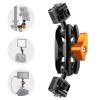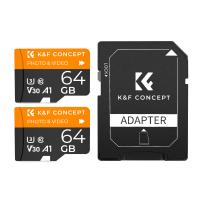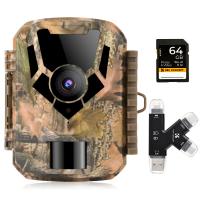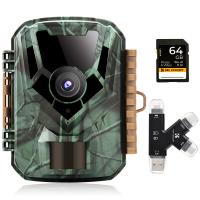How To Format Sd Card On Pc?
Formatting an SD card on a PC is a common task that many users need to perform for various reasons, such as preparing the card for use in a new device, removing all data, or fixing file system errors. This article will guide you through the process of formatting an SD card on a PC, addressing common issues and providing practical solutions.
Understanding the Need for Formatting

Before diving into the steps, it's essential to understand why you might need to format an SD card:
1. Preparing for New Use: When you purchase a new SD card, it might come pre-formatted, but sometimes it’s necessary to format it to ensure compatibility with your device.
2. Removing Data: Formatting is a quick way to erase all data on the card, making it ready for new files.
3. Fixing Errors: If your SD card is showing errors or is corrupted, formatting can often resolve these issues.
4. Changing File System: Different devices require different file systems (e.g., FAT32, exFAT, NTFS). Formatting allows you to change the file system to match your device's requirements.
Steps to Format an SD Card on a PC

Step 1: Insert the SD Card

Insert the SD card into your PC’s card reader. If your PC doesn’t have a built-in card reader, you can use an external USB card reader.
Step 2: Open File Explorer

Open File Explorer by pressing `Win + E` or by clicking on the File Explorer icon in the taskbar.
Step 3: Locate the SD Card
In File Explorer, locate the SD card under "This PC" or "My Computer." It will be listed as a removable drive.
Step 4: Backup Important Data
Before formatting, ensure you have backed up any important data from the SD card, as formatting will erase all data on the card.
Step 5: Right-Click and Select Format
Right-click on the SD card drive and select "Format" from the context menu. This will open the Format dialog box.
Step 6: Choose File System
In the Format dialog box, you will see several options:
- File System: Choose the file system based on your needs. FAT32 is commonly used for SD cards up to 32GB, while exFAT is suitable for larger cards. NTFS is generally used for Windows-specific applications.
- Allocation Unit Size: Leave this at the default setting unless you have specific requirements.
- Volume Label: You can give your SD card a name, but this is optional.
- Quick Format: Check this box if you want a faster format. Uncheck it for a more thorough format, which can help fix errors.
Step 7: Start Formatting
Click "Start" to begin the formatting process. A warning will appear, reminding you that all data will be erased. Confirm to proceed.
Step 8: Complete the Process
Once the formatting is complete, a notification will appear. Click "OK" to finish.
Troubleshooting Common Issues
SD Card Not Recognized
If your SD card is not recognized by your PC, try the following solutions:
- Check the Card Reader: Ensure the card reader is functioning correctly. Try using a different card reader or USB port.
- Update Drivers: Update the drivers for your card reader through Device Manager.
- Check the SD Card: Test the SD card in another device to ensure it’s not damaged.
Unable to Format
If you encounter errors while formatting, try these steps:
- Disk Management: Use Disk Management to format the SD card. Right-click on "This PC" or "My Computer," select "Manage," then go to "Disk Management." Locate the SD card, right-click, and select "Format."
- Command Prompt: Use Command Prompt to format the SD card. Open Command Prompt as an administrator and type `diskpart`, then `list disk`, `select disk X` (replace X with your SD card number), and `clean`. Finally, type `create partition primary`, `select partition 1`, and `format fs=fat32` (or exFAT/NTFS as needed).
Write Protection
If your SD card is write-protected, you won’t be able to format it. To remove write protection:
- Physical Switch: Check for a physical switch on the SD card and ensure it’s in the unlocked position.
- Registry Editor: Open Registry Editor (`regedit`), navigate to `HKEY_LOCAL_MACHINE\SYSTEM\CurrentControlSet\Control\StorageDevicePolicies`, and set the value of `WriteProtect` to 0.
Best Practices for SD Card Maintenance
To ensure the longevity and reliability of your SD card, follow these best practices:
1. Regular Backups: Regularly back up important data to avoid data loss.
2. Safe Removal: Always use the "Safely Remove Hardware" option before removing the SD card from your PC.
3. Avoid Full Capacity: Avoid filling the SD card to its full capacity, as this can lead to performance issues.
4. Use Quality Cards: Invest in high-quality SD cards from reputable brands to reduce the risk of corruption and data loss.
Formatting an SD card on a PC is a straightforward process, but it’s essential to follow the correct steps to avoid data loss and ensure compatibility with your devices. By understanding the reasons for formatting, following the detailed steps provided, and troubleshooting common issues, you can effectively manage your SD cards and maintain their performance. Remember to back up your data regularly and handle your SD cards with care to prolong their lifespan and reliability.
















There are no comments for this blog.